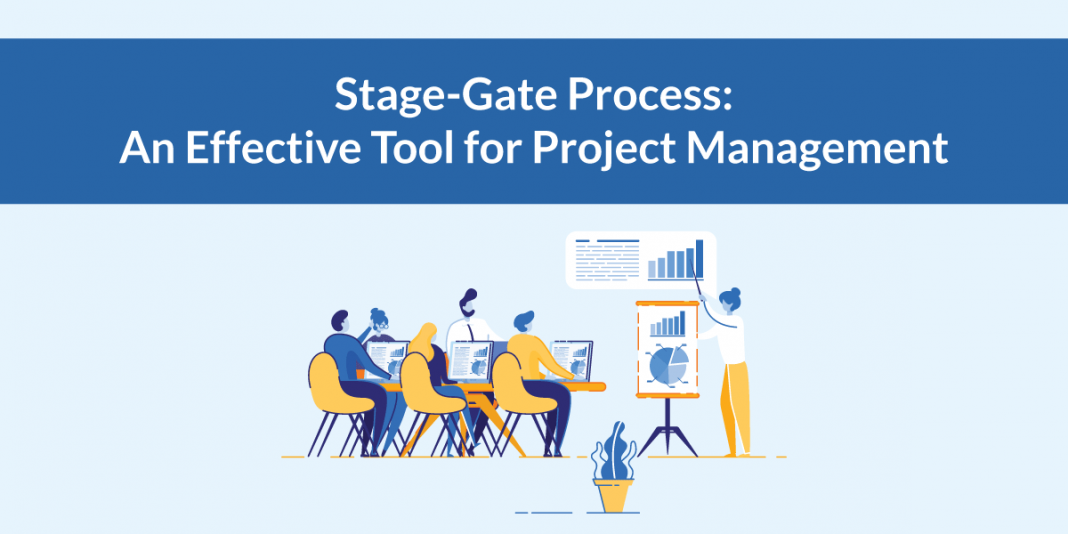The efforts to start the execution process of the idea of the desired project can be very tedious; however, one cannot afford mistakes in the procedure. “Stage-Gate Process” is the key process that can help you avoid making most of the mistakes with your project management.
Good project leaders are aware that a solid framework is the first step in any project’s success. Project managers can plan, optimize, and carry out various stages of a project with greater efficiency by using the stage-gate process for Project Management.
What is Stage-Gate in Project Management?
Created and trademarked by Bob Cooper, Stage-Gate, which is also called Phase Gate, is frequently used among project managers as it is one of the prominent Project management methodologies, which guides managers from the project’s beginning to completion. The stage-gate procedure follows the linear process of operation where one step continues to the next and the cycle goes on until the desired result is achieved. Waterfall methodology is similar to stage gate methodology as they both follow the linear procedure of operation.
The basic ideology behind the stage-gate process is that it breaks the project into various phases and then each stage/phase is bookend by a “Gate,” which prevents the user from moving to the next step until the current stage is successfully cleared. Hence, the name is derived as “Stage-Gate.”
At each phase, the user has to decide whether the phase is completed and should proceed to the next phase or not. These are the four decisions that must be made for the smooth functioning of the Stage-Gate methodology –
- Go: The phase is completed, and we can proceed to the next stage.
- Hold: Although the project is functional, it is not yet prepared to advance to the next phase.
- Recycle: If we adjust the scope of the project, we can advance it.
- Kill: Things aren’t working properly, shut it down!
6 Steps to Use the Stage-Gate Process for Project Management
Step 1: Idea
The idea is the initial step of any project. In this brainstorming step, the project’s concepts are developed with the participation of stakeholders. This level may involve both internal and external knowledge and viewpoints.
Step 2: Scope
The evaluation of the product’s potential is taken more seriously during scoping in the stage-gate process for new product development. It will incorporate market and competitive analysis as well as a study of the product’s advantages, disadvantages, capabilities, and faults. At this step, the stakeholders also proceed with their SWOT analysis to get a first-hand picture of the details of the project.
Step 3: Business Plan
After the successful completion of the previous stage, in this step, the business plan and the use case have to be drawn. The business case includes a project definition, why it needs to be developed, and the proposed plan for its development. Numerous projects are destroyed at this point. At this stage of the development process, it is crucial to evaluate three key elements:
- Definition of the product and project
- Justification of the project
- Product Plan
A feasibility review must be conducted as part of this stage to determine the probability of success and the approximate cost of development. The gate closes if the use case doesn’t make sense and the user won’t be able to proceed to the next phase.
Step 4: Development
In this stage, all major stakeholders and departmental heads of the organization are involved. Plans are divided into distinct deliverables, such as the product’s design and development. It will outline deadlines and necessary milestones. Plans are made for marketing launches, operationalization, testing, and validation in addition to product development.
A working model or prototype of the product is developed at the end of this stage. If not, a go/kill/hold/recycle decision must be made at the gate.
Step 5: Testing and Validation
After the development of a working prototype of the product in the previous step, in this step, the validation testing of the product takes place. The product, process of production, economics, and consumer insights and acceptance must all be tested as part of the use case. The project’s quality assurance phase is currently underway. Through testing, bugs will be worked out, and changes will be made to the necessary places of the project.
Step 6: Launch
This is the final step of the stage-gate process. In this step, the product eventually reaches the market. The product is ready to be released since all bugs have been fixed, every component has undergone testing, and all stakeholders have given their approval.
Once the product reaches the market, the production is rolled out in full capacity. The managers analyze the performance of the product in the market and look out for what worked and what could be improved.
Conclusion
The stage-gate procedure adds efficiency, effectiveness, and alignment to your project, thereby helping you become a better project manager. This process leads to an increase in the probability of success of the product in the markets.
It’s crucial for all members of the project team to understand this process in order to prevent projects from going off-rail. As a project manager, you can educate your team through a visually engaging Stage-Gate Process presentation and get the right support.
How do you find this blog post? Share your comments with us!
